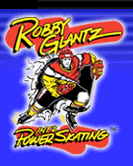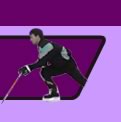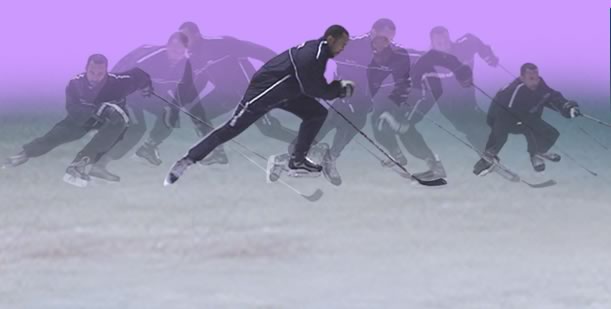Tips For Coaches
No matter where I am coaching power skating, whether it is in North America or Europe, I am asked this one question by the players' everyday coaches all the time, "How do we incorporate skating training into our practices, when we barely have enough ice time to teach shooting, passing, positional play and strategy?" They ask it not in a cynical manner but, rather, in a perplexed way. These coaches seem to know how important skating is to the game and truly want to incorporate it into their training but they do not know the best way to go about it.
I can certainly understand this difficult problem which coaches face. As most of us involved with hockey are well aware of there is a scarcity of ice time. Therefore, the tendency is to emphasize only the "fun" aspects of hockey (i.e. shooting, passing, scrimmages, etc.) during team practices. However, learning to skate better makes the whole game easier to play and more enjoyable; and the learning aspect itself can also be fun and imaginative.
THE OBVIOUS SKATING TIPS:
As aforementioned in the introduction, lack of ice time is, of course, the biggest problem that leads to the minimal time spent on skating training in practice. However, another problem is that teaching skating fundamentals can sometimes be a very subtle art and most coaches are not trained as power skating instructors. But there are certain aspects of skating fundamentals that we can all see, and these are the fundamentals that coaches should stress. They include, having the players bend the knees more than where they feel comfortable, pushing the legs to full extension in the forwards and backwards stride, not to run on the skates, instead, use the edges and not the flats of the blades and to make sure that the players do not hunch over but rather that they bend at the knees while keeping their back straight. And these are just a few examples of fundamentals that all coaches can repetitively talk about with their players.
MAKE IT FUN!
Certainly, players need time to work on their other skills such as passing, shooting and stick handling which are the so called "fun" part of hockey; and while these vital aspects of the game should be practiced let's not forget that skating better only helps to make these skills stronger. And, learning to skate better can be fun too. One of the major problems I have with coaches is the way in which skating is used as a negative or a punishment. This automatically sets the wrong tone for the players. Try to be creative when disciplining your team. Simply threatening your team or an individual player, with laps or other skating drills minus the puck, for example, sends the signal to them that skating is only practiced as a last resort. There are, of course, times to emphasize stamina and endurance drills and times to emphasize technique as well, with each individual situation being different it is the coaches job to weigh all the factors of their team to decide the best times for each. We find that the beginning of the season is an excellent time for technique training and it is very important to stick with it as the season progresses.
TRY NEW EXERCISES
As many of us know, a good time to practice skating technique drills is during the warm-ups before the pucks come on the ice. However, hockey skating techniques can be practiced while using pucks, as well. One of the greatest problems I encounter in my travels is with the creativity on the part of some coaches and the lack of imaginative and well rounded drills. For example, simply because the pucks are on the ice does not mean that the players have to carry it with them everywhere they go. BE CREATIVE! Maybe, place the pucks in a certain location and have the players do some fun and explosive skating maneuvers before they pick up the puck so they have no distractions and are free to concentrate solely on their technique (see diagram for an example drill).
Finally, and perhaps most importantly, encourage players at all levels to try so hard that they make mistakes. Instead of frowning when a player falls down give them a pat on the rear and let them know that even Wayne Gretzky and Mario Lemieux fall down, then try explain from a technique standpoint why it happened. All players MUST make mistakes and TAKE CHANCES if they are to improve their skating and you as coaches have to be there to support them.





